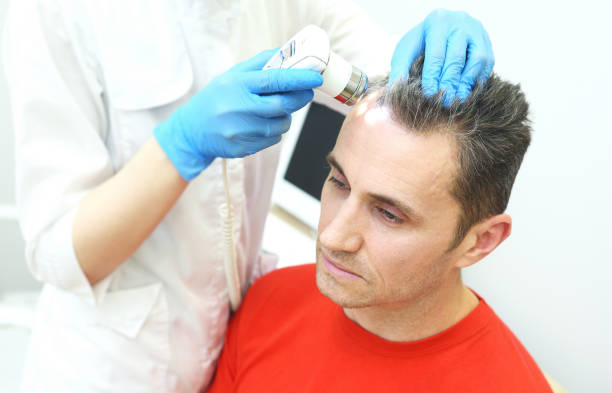Managing Scalp Psoriasis: Symptoms, Treatments & Ongoing Care
Scalp psoriasis causes itchy, red, scaly patches that can be mistaken for dandruff. This guide explains proven treatment options—from medicated shampoos and prescription topicals to systemic drugs and light therapy—plus practical self-care, natural approaches, cost considerations, and tips to reduce flare-ups for long-term relief.

Topical options for scalp psoriasis
Topical therapies are usually the first approach recommended to control scalp psoriasis. Over-the-counter medicated shampoos containing salicylic acid or coal tar help soften and remove thick scales, making other treatments easier to apply. Prescription topical corticosteroids remain a mainstay for reducing inflammation and itching. Other prescription topical agents include vitamin D analogues and topical retinoids, which can slow excess skin cell production and improve scaling. For best results, apply treatments directly to affected areas of the scalp and follow your provider’s directions about frequency and duration.
When systemic therapy and light treatment are needed
If patching is widespread or topical treatments do not bring adequate relief, systemic therapies may be considered. Oral medications and injectable biologic drugs work throughout the body to suppress the immune processes that drive psoriasis, often producing more consistent control of severe disease. Because these agents can have significant effects and require monitoring, they are prescribed and managed by specialists.
Phototherapy is another effective option for some people. Controlled ultraviolet light sessions help slow abnormal skin cell growth and reduce inflammation. Phototherapy for the scalp may require specialized devices or clinic-based treatments, and it is important to protect unaffected skin and follow safety guidance to minimize risks associated with UV exposure.
Practical self-care and lifestyle measures
Daily habits can make a big difference in symptom control. Use gentle, fragrance-free shampoos and wash frequently enough to help lift scales without stripping the scalp. Avoid aggressive scrubbing or harsh styling products that irritate the skin. Managing stress is also important: psychological stress can trigger or worsen flare-ups, so relaxation practices, adequate sleep, and seeking support when needed can help.
A balanced diet that focuses on anti-inflammatory foods — vegetables, fatty fish, whole grains, and healthy fats — can support overall skin health, though no single diet cures psoriasis. Staying hydrated and avoiding known personal triggers, such as smoking or excessive alcohol, may reduce the frequency or severity of flares.
Complementary and natural remedies: proceed with caution
Some people try natural products such as tea tree oil, aloe vera, or coconut oil to soothe scalp irritation and reduce flaking. While these can provide symptomatic relief for some, they may cause allergic reactions or interact with prescription treatments. Discuss any complementary approaches with your dermatologist before use and test new topical products on a small area first.
Costs and coverage: what to expect
Below is a general overview of typical costs associated with scalp psoriasis care. Actual prices vary by location, brand, dosage, and insurance plan. Check with your provider and insurer for the most accurate, individualized information.
| Treatment Type | Average Cost Range | Insurance Coverage |
|---|---|---|
| Medicated Shampoos | $10–30 per bottle | Usually not covered |
| Prescription Topicals | $30–200 per month | Often partially covered |
| Systemic Medications | $500–3,000 per month | Usually partially covered |
| Phototherapy | $100–300 per session | Often partially covered |
Prices, rates, or cost estimates mentioned in this article are based on the latest available information but may change over time. Independent research is advised before making financial decisions.
Long-term management and prevention
Scalp psoriasis is typically a chronic condition that benefits from a consistent, individualized care plan. Regular follow-ups with a dermatologist help tailor therapies, monitor response, and manage side effects. Keeping a symptom diary can identify personal triggers — for example, particular hair products, infections, or stressors — so you can avoid them when possible.
Preventive strategies include limiting exposure to harsh chemical treatments, protecting the scalp from sunburn, and using gentle hair-care practices. If you begin a new medication, keep your clinician informed about other health issues or medications to reduce the risk of interactions and complications.
Coordinating care and setting expectations
Treatments often require time to take effect, and combining approaches (for example, using a medicated shampoo with a prescription topical) can improve outcomes. For moderate to severe disease, systemic drugs or biologics may offer significant improvement but require discussion of benefits and risks, routine monitoring, and sometimes laboratory tests.
Working as a partner with your healthcare team — asking about alternatives, side effects, proper application techniques, and what to expect over weeks to months — helps set realistic goals and improves long-term success.
This article is for informational purposes only and should not be considered medical advice. Please consult a qualified healthcare professional for personalized guidance and treatment.





